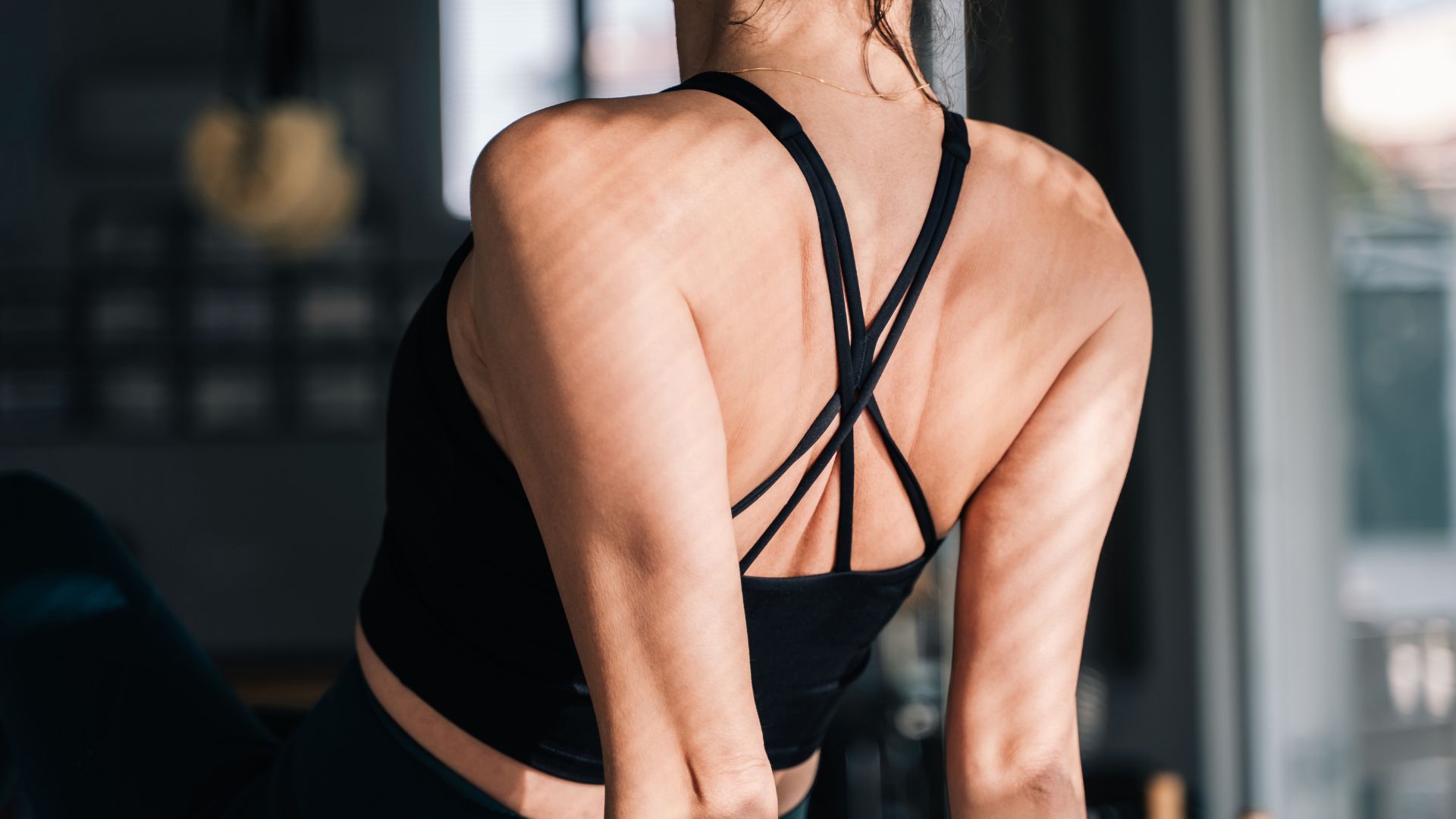Try these 5 back exercises and thank me later - they are all you need to improve posture, strength and mobility
Physiotherapist Vicky Lewis-Baldy sees women with lower back discomfort almost every day. These are her go-to exercises for nipping it in the bud.


With 8 in 10 people reporting some lower back issue in their lives, and many of us taking things into our own hands to try and ease the discomfort, it's hardly surprising that physiotherapists spend so much time prescribing back exercises.
"Over the years, I've seen women unintentionally compromise their lower back health by overusing sit-ups or crunches, neglecting mobility exercises, jumping into high-intensity exercise too quickly, or using poor lifting mechanics during strength training exercises," says Vicky, a chartered physiotherapist, level 4 personal trainer, and the founder of Hybrid Health.
"Often, these issues develop gradually and are mistakenly attributed to 'just getting older', when in fact, they're highly treatable with the right approach," she says.
Like glute exercises, many back exercises also have added benefits like improving strength, posture, and mobility. So, whether you've just started feeling a niggle or you've been doing traditional exercises with no luck, these movements could be the way forward.
Back exercises
1. Bird Dog with Reach and Band Pull
- Begin on hands and knees.
- Attach a resistance band to your ankle and hold it with your opposite hand.
- Extend one arm and the opposite leg, hold briefly, then bring the elbow and knee together underneath your body.
- Switch sides.
Expert tip: The key to the bird dog exercise is to move slowly, keeping hips level and spine neutral throughout the motion, says Vicky.
2. Plank with shoulder taps
- Come down onto your yoga mat and take a plank position, resting your hands.
- Making sure your core is stabilised, tap each shoulder with the opposite hand.
- If you struggle with stability, keep your feet slightly wider.
Expert tip: "Don’t rush. Keep the body steady and avoid letting the hips sway from side to side," says the physio.
3. Back extension on the floor
- Lie flat on your stomach with your hands off the floor.
- Gently lift your back up without using your arms, and keep your chin tucked in.
Expert tip: "Only lift to your comfort zone," says Vicky. "You should feel length, not compression."
Sign up to our free daily email for the latest royal and entertainment news, interesting opinion, expert advice on styling and beauty trends, and no-nonsense guides to the health and wellness questions you want answered.
The back extension is very similar to the Superman exercise, except you keep both feet on the floor in this movement.
4. Plank into side plank
- Go into a frontal plank with your hands on the floor.
- Brace your abs, then twist your body into a side plank, keeping your arm straight.
- Hold for 1 to 2 seconds then slowly return, then switch sides.
Expert tip: "Keep hips forward, and don’t collapse through the bottom waist," she says.
5. Banded seated row
- Sit on the floor with legs extended, a resistance band looped around your feet.
- Hold the band with both hands.
- Tilt your torso back 20 to 30 degrees, brace your core, then row by pulling the band toward your ribs and slowly releasing.
Expert tip: "Keep the spine long and avoid rounding the shoulders. Brace the core as if someone’s about to push you backwards," says Vicky.
What causes back pain?
Overusing muscles and strains are the most common causes of back pain, says Vicky. "For example, I've seen people jump into high-intensity routines without foundational stability, which leads to early fatigue and form breakdown," she explains. "Poor mechanics when lifting weights is also a common culprit for sudden lower back pain."
But sometimes, it's not even issues with the back that cause pain. Weak muscles in other parts of the body can mean we end up relying on the spine more than we should, she says.
"Doing lots of sit-ups and crunches can increase lumbar pressure while doing little for deep core strength, tight hip flexors or glutes force the spine to compensate, and weak glutes and hamstrings mean the spine picks up the slack."
If you're experiencing any back pain or discomfort, visit a physiotherapist or doctor before attempting any new exercise routine.
What are the benefits of back exercises?
- Improves posture: These back exercises combine postural strength and core engagement, says Vicky, which is key for improving our sitting posture. "It's great for spinal control, upper back endurance, and for reducing forward-posture strain."
- Targets the back muscles: These exercises may be challenging, but they can help improve back strength and 'tone' (i.e. build muscle) in this area.
- Boosts core strength: Back and core exercises go hand-in-hand, as they are all part of the same system. These moves "build lateral core strength and stabilise the spine against side-to-side forces, which is key for lower back resilience," says Vicky.
- Eases the impact of menopause: "Declining oestrogen levels reduce bone density, affect collagen structure in connective tissues, and contribute to muscle loss. This results in a spine that is less supported and more vulnerable to strain," says Vicky.
- Great for those working from home: If you work from home or spend a lot of time sedentary, back exercises like these can ease the strain as they "mobilise the lumbar spine and nourish spinal discs," says Vicky.
Tips for avoiding lower back discomfort
- Build a stronger core: As well as doing back exercises, Vicky recommends focusing on core exercises to "strengthen the deep abdominal and pelvic muscles".
- Improve hip mobility: Tight hips? It could be causing lower back discomfort. "Mobilise the hips and the thoracic spine," she says. "This takes unnecessary strain off the lower back."
- Focus on functional fitness: These are exercises and workouts like callisthenics for beginners that replicate real-life movement patterns.
- Be aware of your posture: As you're sitting down during the day, take a note of how your posture looks and feels.
- Focus on consistency: It's better to go slowly and see results over time than try to move too fast and risk injury. "Avoid large leaps in activity that your spine isn't ready for," says the physio.

Grace Walsh is woman&home's Health Channel Editor, working across the areas of fitness, nutrition, sleep, mental health, relationships, and sex. She is also a qualified fitness instructor. In 2025, she will be taking on her third marathon in Brighton, completing her first ultra marathon, and qualifying as a certified personal trainer and nutrition coach.
A digital journalist with over seven years experience as a writer and editor for UK publications, Grace has covered (almost) everything in the world of health and wellbeing with bylines in Cosmopolitan, Red, The i Paper, GoodtoKnow, and more.
You must confirm your public display name before commenting
Please logout and then login again, you will then be prompted to enter your display name.